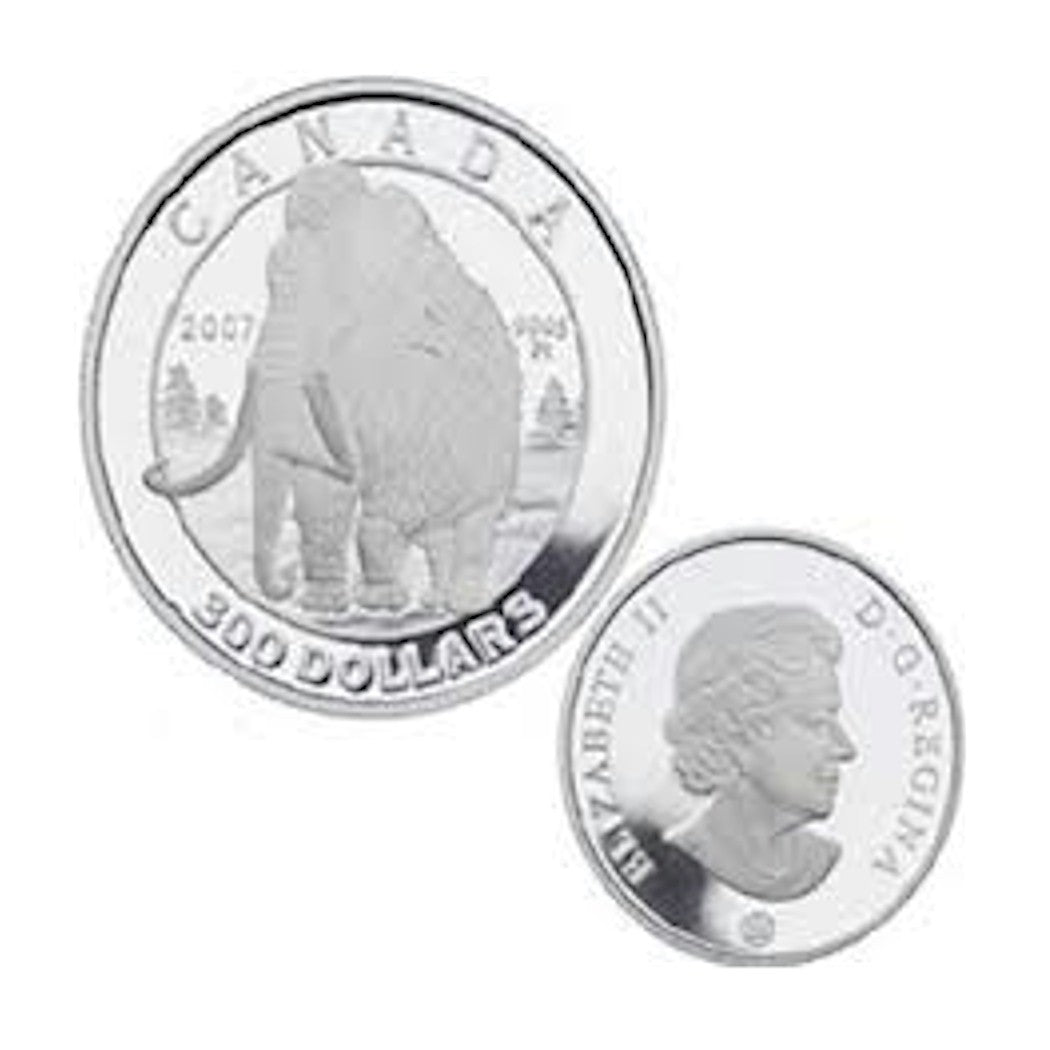Colonial Acres Coins
SKU: SKU:Platinum-2007.Mammoth
2007 Canada $300 Woolly Mammoth Platinum Coin (TAX Exempt) Missing Sleeve
2007 Canada $300 Woolly Mammoth Platinum Coin (TAX Exempt) Missing Sleeve
Regular price
$1,999.00
Regular price
$2,999.95
Sale price
$1,999.00
Unit price
per
We buy at $0.00
◎ Not Available
Couldn't load pickup availability

FREE SHIPPING OVER $500
2007 Canada $300 Woolly Mammoth Platinum Coin (TAX Exempt)
If there ever was an animal that symbolizes the Ice Age, it would be the woolly mammoth (Mammuthus primigenius), an elephant species that died out approximately 3,700 years ago. Remains of the last known survivors have been found on Wrangel Island, Siberia.
Despite its demise, scientists have been able to learn a great deal about the woolly mammoth because well-preserved remains and carcasses have been found in the frozen ground of Siberia and North America. Cave art in France and Spain testify to the animal's appearance, behaviour and its inter-relationship with people of the Stone Age. What's more, the modern-day elephant provides a living and observable example of how the woolly mammoth may have behaved.
The woolly mammoth was about the same size as an Asiatic elephant, about 3 m (10 ft) tall at the shoulders with a high, peaked head and a hump along its neck. To survive the cold, it had the same type of hair as the muskox; an outer layer of dark 90 cm (3 ft) long guard hairs with a fine underwool; that was further insulated by a thick layer of fat. Its hairy trunk was shorter than that of modern elephants, but it had large, curved tusks up to 4.2 m (14 ft) long. Specimens show significant wear on the underside suggesting the tusks were used to scrape away ice and snow covering grasses, the woolly mammoth's key food source. This massive herbivore ate some 90 kg (200 lb) a day which it ground down with its massive, elephant-like cheek teeth.
Specifications:
Face Value: 300 dollars
Mintage: 400
Composition: 99.95% Platinum
Weight (g): 31
Diameter (mm): 30
Edge: Serrated
Finish: Proof
If there ever was an animal that symbolizes the Ice Age, it would be the woolly mammoth (Mammuthus primigenius), an elephant species that died out approximately 3,700 years ago. Remains of the last known survivors have been found on Wrangel Island, Siberia.
Despite its demise, scientists have been able to learn a great deal about the woolly mammoth because well-preserved remains and carcasses have been found in the frozen ground of Siberia and North America. Cave art in France and Spain testify to the animal's appearance, behaviour and its inter-relationship with people of the Stone Age. What's more, the modern-day elephant provides a living and observable example of how the woolly mammoth may have behaved.
The woolly mammoth was about the same size as an Asiatic elephant, about 3 m (10 ft) tall at the shoulders with a high, peaked head and a hump along its neck. To survive the cold, it had the same type of hair as the muskox; an outer layer of dark 90 cm (3 ft) long guard hairs with a fine underwool; that was further insulated by a thick layer of fat. Its hairy trunk was shorter than that of modern elephants, but it had large, curved tusks up to 4.2 m (14 ft) long. Specimens show significant wear on the underside suggesting the tusks were used to scrape away ice and snow covering grasses, the woolly mammoth's key food source. This massive herbivore ate some 90 kg (200 lb) a day which it ground down with its massive, elephant-like cheek teeth.
Specifications:
Face Value: 300 dollars
Mintage: 400
Composition: 99.95% Platinum
Weight (g): 31
Diameter (mm): 30
Edge: Serrated
Finish: Proof






